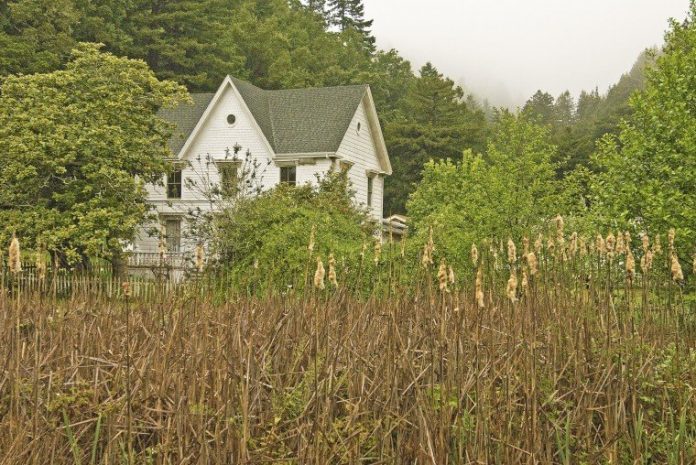It was a wet and dreary morning when we turned into one of the canyons that funnel storm runoff down the slope of Mt. Tamalpais and into Bolinas Lagoon. We parked near the old white clapboard ranch house and walked to a clearing for a view up the thickly forested canyon. There it was. One Douglas fir, standing high above its neighbors, seemed decorated like a Christmas tree with many large fluffy white ornaments.
Most of the Great Egret and Great Blue Heron nesting sites around the San Francisco Bay are gone, but this quiet canyon near Stinson Beach in Marin County is one of the largest rookeries on the West Coast. These elegant and graceful birds return to these treetops every spring, nesting in close-quarter colonies, their bright white plumage clearly visible against the Douglas fir’s dark foliage. It’s quite a sight.
Fifty years ago, the Audubon Society recognized the importance of this canyon, and purchased the property, which became Audubon Canyon Ranch. Since then, the Audubon Canyon Ranch organization has grown to protect additional sensitive properties, and this preserve has been renamed Martin Griffin Preserve to honor the man instrumental in saving it.
We met Gwen Heistand, the Resident Biologist at the preserve, who guided us to the Kent Trail and we began edging above the valley floor toward lookouts above. We walked through a dense forest of redwoods, Douglas firs, oaks and bay trees watered by fog and rain that regularly drench these slopes.
It was a matter of minutes before we reached Henderson Overlook, a small wooden bleacher overlooking the valley. Now, we had a bird’s-eye view from above the Great Egret nests. With the aid of powerful spotting scopes, we were able to get an intimate look at the birds incubating their eggs in huge twig-built nests.
Great Egrets begin arriving in mid-March, and by mid-April, it is peak laying time. At last count, Gwen said there were 50 nests in the tree below us, though in seasons past, they have had as many as one hundred nests. Clutch size is usually 3 to 4 eggs, but only chicks two generally survive predation by ravens and raptors, since after the hatch, both mom and dad must hunt to meet feeding needs, which leaves the nest untended and vulnerable.
The only birds currently in the canyon are the Great Egrets, so I asked about the Great Blue Herons that have also traditionally nested here. She explained that in recent years, the herons have moved to nearby Kent Island in Bolinas Lagoon, a short distance beyond the mouth of the canyon.
Just above the overlook we turned left onto the Griffin Loop Trail and turned back down the hill. While the birds are the headline act here, they are not the only attraction. Douglas Irises, ranging in color from bright purple to a pale yellow, decorated our entire walk along the trail. And the views! The few narrow views we had seen toward Bolinas Lagoon opened to a vast one at the Clem Miller Lookout.
Back near the visitor center, I walked to the back of the grounds for a last look at the crowded rookery. Seeing an occasional lone egret in a field is a great sight, but watching these elegant and graceful birds in such numbers is a stirring treat. And the process has just begun. Over the next couple of months, the eggs will hatch and the chicks will take their first flight.
Martin Griffin Preserve is open during the nesting season on weekends and holidays from 10 a.m. to 4 p.m. or by appointment (www.egret.org). It’s free, but they would appreciate a donation.











